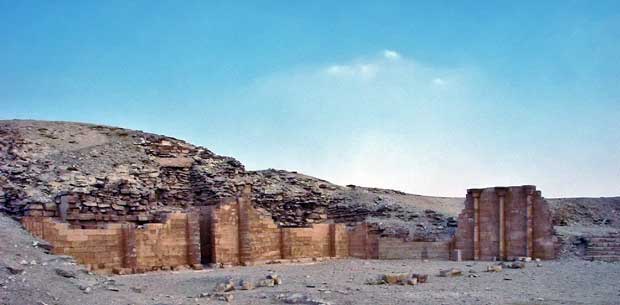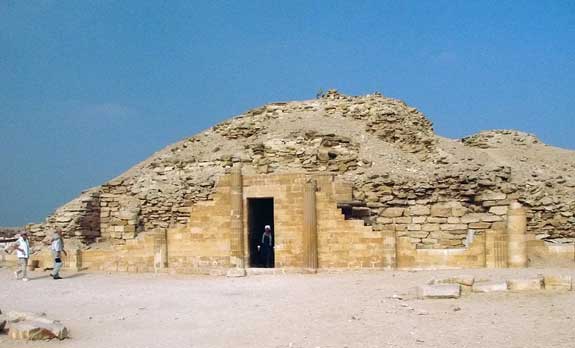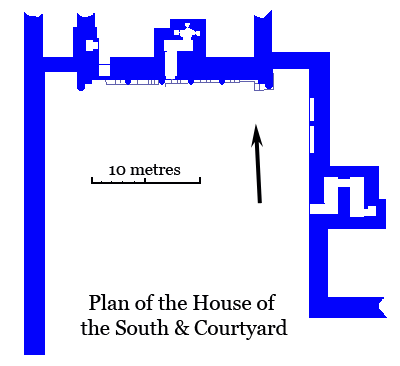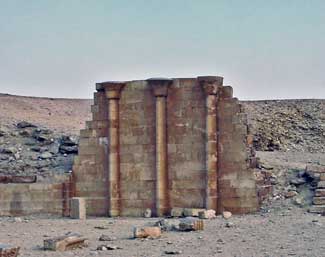
The House of the North
A narrow passage in the northwest corner of the Heb Sed Court leads to two long courtyards lying to the east of the step pyramid. They were separated by an north-south wall with a stone door (open, of course) permitting access between them. At the far end of the eastern court is a structure known as the House of the South and beyond it, another courtyard with a simular building, the House of the North. It is generally believed that the two buildings are stone versions of the temporary pavilions used by the pharaoh during the Heb-Sed, perhaps representing the White House of Upper Egypt and the Red House of the Delta.
The design of the two buildings is very similar in appearance to the per wer chapels of the Heb Sed Court although they are larger and more elaborate. The House of the South has the same vaulted roof and tapering, fluted columns with pendant, leaf-like capitals. The tallest of these has been estimated to have been about 12 metres high. The corners were supported by ribbed pilasters

House of the South
(in other words, they are rectangular in section) next to two semi-circular fluted shafts. The doorway is off-centre, clinging to one of the columns. Above the doorway is what is known as a

kheker frieze that Lauer believed represented a rope of knotted grass but is more likely to have been based on the fringe of a mat or carpet.
The interior of what is otherwise a solid mass of masonry, consists of a narrow passage that makes two 90 degree turns leading to a small cruciform chamber with niches in the shape of hut-shrines. It has been suggested that the crowns of Upper Egypt were kept here (they had to be kept somewhere).
The courtyard is about 75 metres long and broadens from about 25 to about 40 metres across. The eastern and southern walls were decorated with alternating niches and buttresses. One particularly broad niche in the eastern wall frames a single column, probably with a lotus capital symbolizing Upper Egypt. Next to it is another small chapel with a zigzag corridor leading to what appears to be a small niche while in the southwest corner are

the foundations of a horseshoe-shaped marker, similar to those in the Great Court.
The House of the North (top) is very similar in plan but the courtyard is much reduced in size. The semi-circular shafts at the corners are missing. The corridor is a little longer and contains two niches in addition to the ones in the cruciform chamber. Here too, the archaeologists found a broad niche (right) in the east wall of the courtyard but, in this case, it was much better preserved. The niche contained three papyriform columns, replicas of the plant form that characterized the Delta. There is a slight swelling of the shafts of the stems (entasis), which are triangular in section.







0 التعليقات:
إرسال تعليق